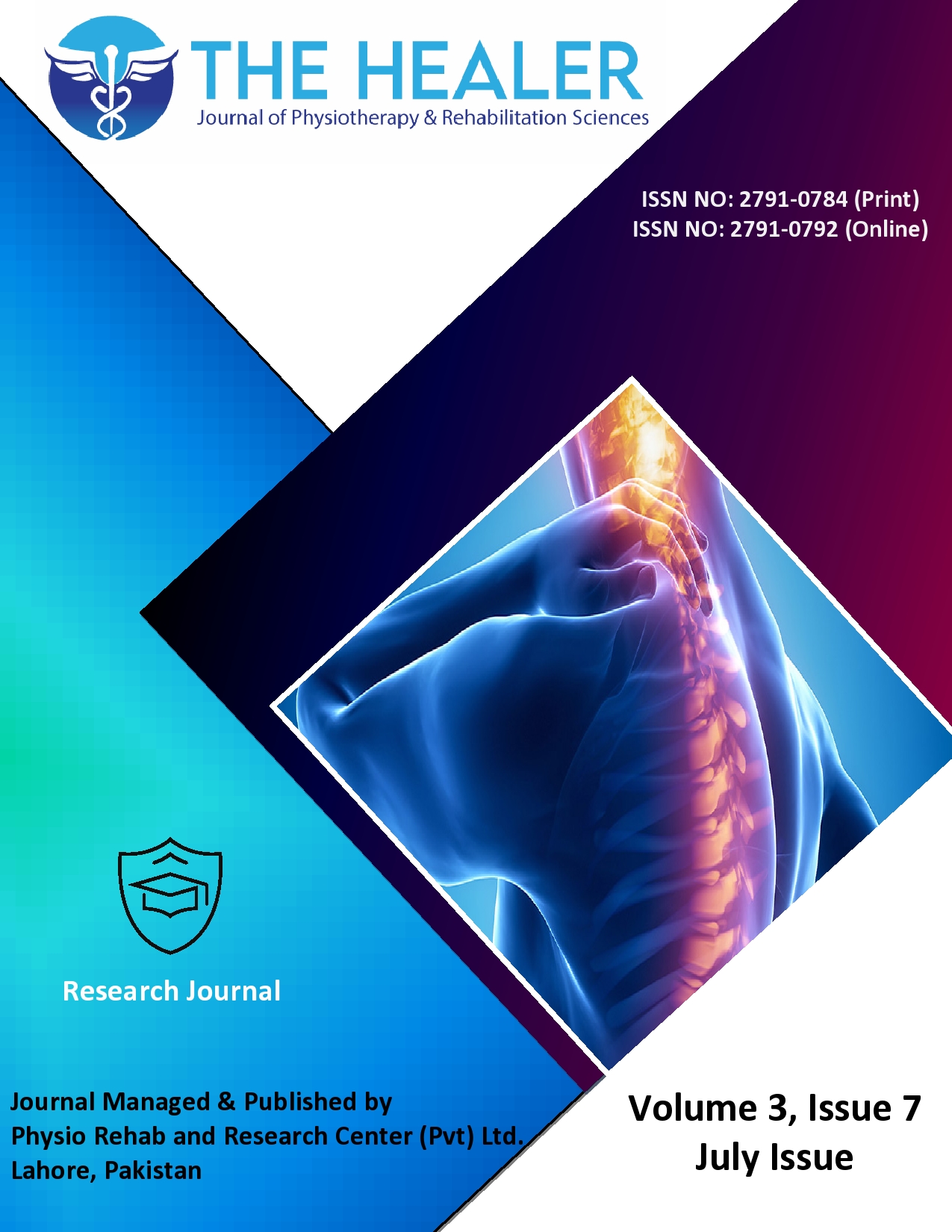Impact of Frailty on Geriatric Patients with Fractures and its Association with Functional Activities
Impact of Frailty on Geriatric Patients
DOI:
https://doi.org/10.55735/hjprs.v3i7.158Keywords:
bone fragility, fractures, frailty, functional status, geriatrics, osteoporosisAbstract
Background: Fragility fractures are breaks in the continuity of bones that result from minor traumas caused by mechanical forces that would not usually result in fractures. Geriatric fractures represent a major source of dysfunction and declining health-related quality of life in the elderly following a limb fracture, most of the interventions are centered on restricting mobility dysfunction and improving independence with activities of daily living. Objective: To find the impact of frailty on the geriatric population presenting in the hospital with fractures and how this frailty is associated with their functional status. Methods: An observational cross-sectional study was performed on a sample of 97 geriatric population using non-probability convenient sampling in six months. Permission from the ethics committee of Rashid Latif College of Physical Therapy was obtained to carry out the study. The data was collected from Jinnah Hospital, Arif Memorial Teaching Hospital and National Hospital, Lahore. The inclusion criteria were participants with age 65 years or older, admitted to the hospital and presented with fragility fracture. Participants with a history of high-velocity crush injury, complicated surgical conditions and any malignancy were excluded from the study. Participants were assessed based on the frail questionnaire for frailty and the Groningen frailty index for their functional activities status. The quantitative variables were presented as mean and standard deviation while qualitative variables were evaluated as proportions, frequencies, cross-tabulations, pie charts, etc. The test results for multiple choice questions were compared using a chi-square test. Results: The mean age of the participants was 73.63±6.91, among which 53(54.6%) were males and 44(45.4%) were females. The prevalence of fragility fractures in frail participants was 79.4% and pre-frail participants were 20.6%. About 64.9% of frail participants and 2.1% pre-frail were having impaired functional activities while 56.7% of participants were having fitness between 0-6 out of 10 and 22.7% were having fitness from 7-10 (p=0.047). Conclusion: Frailty index has a significant impact on fractures and is associated with the functional status of participants. Most patients were not able to perform their activities of daily living and those who can perform were having limited functional activities.
References
Roth T, Kammerlander C, Gosch M, Luger T, Blauth M. Outcome in geriatric fracture patients and how it can be improved. Osteoporosis international 2010; 21(4): 615-9.
van de Ree CL, Landers MJ, Kruithof N, et al. Effect of frailty on quality of life in elderly patients after hip fracture: a longitudinal study. BMJ open 2019; 9(7): e025941.
Obrant KJ, Bengnér U, Johnell O, Nilsson BE, Sernbo I. Increasing age-adjusted risk of fragility fractures: a sign of increasing osteoporosis in successive generations? : Springer; 1989. p. 157-67.
Friedman SM, Mendelson DA. Epidemiology of fragility fractures. Clinics in geriatric medicine 2014; 30(2): 175-81.
Cruz-Jentoft AJ, Baeyens JP, Bauer JM, et al. Sarcopenia: European consensus on definition and diagnosisReport of the European Working Group on Sarcopenia in Older PeopleA. J. Cruz-Gentoft et al. Age and ageing 2010; 39(4): 412-23.
Demontiero O, Vidal C, Duque G. Aging and bone loss: new insights for the clinician. Therapeutic advances in musculoskeletal disease 2012; 4(2): 61-76.
Nuti R, Brandi ML, Checchia G, et al. Guidelines for the management of osteoporosis and fragility fractures. Internal and emergency medicine 2019; 14(1): 85-102.
Della Rocca GJ, Crist BD. Hip fracture protocols: what have we changed? Orthopedic Clinics 2013; 44(2): 163-82.
Visentin P, Ciravegna R, Uscello L, Molaschi M, Fabris F. Site-specific relative risk of fractures in the institutionalized elderly. Gerontology 1995; 41(5): 273-9.
!!! INVALID CITATION !!!
Hilmer SN, McLachlan AJ, Le Couteur DG. Clinical pharmacology in the geriatric patient. Fundamental & clinical pharmacology 2007; 21(3): 217-30.
Xenodemetropoulos T, Davison S, Ioannidis G, Adachi JD. The impact of fragility fracture on health-related quality of life. Drugs & aging 2004; 21(11): 711-30.
Papaioannou A, Kennedy CC, Ioannidis G, et al. The impact of incident fractures on health-related quality of life: 5 years of data from the Canadian Multicentre Osteoporosis Study. Osteoporosis International 2009; 20(5): 703-14.
Milte R, Crotty M. Musculoskeletal health, frailty and functional decline. Best Practice & Research Clinical Rheumatology 2014; 28(3): 395-410.
Fried LP, Tangen CM, Walston J, et al. Frailty in older adults: evidence for a phenotype. The Journals of Gerontology Series A: Biological Sciences and Medical Sciences 2001; 56(3): M146-M57.
Daly R. Exercise and nutritional approaches to prevent frail bones, falls and fractures: an update. Climacteric 2017; 20(2): 119-24.
Baidwan N, Naranje S. Epidemiology and recent trends of geriatric fractures presenting to the emergency department for United States population from year 2004–2014. Public Health 2017; 142: 64-9.
Gobbens RJ, van Assen MA, Luijkx KG, Schols JM. The predictive validity of the Tilburg Frailty Indicator: disability, health care utilization, and quality of life in a population at risk. The Gerontologist 2012; 52(5): 619-31.
Pollack LR, Litwack‐Harrison S, Cawthon PM, et al. Patterns and predictors of frailty transitions in older men: the osteoporotic fractures in men study. Journal of the American Geriatrics Society 2017; 65(11): 2473-9.
Trevisan C, Zanforlini B, Bertocco A, et al. Frailty status and the risk of fractures in older people: the Pro. VA Longitudinal study. Journal of Gerontology and Geriatrics 2018; 66: 119-26.

Downloads
Published
How to Cite
License
Copyright (c) 2023 The Healer Journal of Physiotherapy and Rehabilitation Sciences

This work is licensed under a Creative Commons Attribution 4.0 International License.
CC BY


